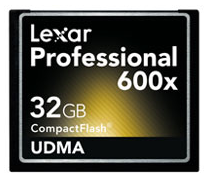Many photographers have a preference in camera bodies and lenses, but often they don’t know which CF card would work the best for them. Fortunately for us, memory cards are all measured in the same format… unlike many competitive items (in which you then need to bring a calculator to really figure out which is the best). Memory cards are measured in:
- Capacity (2GB, 4GB, 8GB, etc…) (now a day’s it’s not even worth mentioning anything under 1GB).
- X speed. (Ex: 300x Speed) (1x = 0.15MB/sec in transfer).
Ok, so that seems simple enough.
First decide which size (or capacity) of a card you really need. Do you shoot RAW or .jpg? Sports or landscape? If you are shooting RAW you should consider 8GB+. My 8GB card will hold around 360 RAW images, which is usually just fine. If I were to shoot sports however, you would need either a larger card or multiple cards due to the increased number of shots.

I would prefer to own two 8GB cards over one 16GB card. Why? If my camera magically fries my poor ol’ memory card I only loose half my picture. It’s an effective safety net while you are out shooting.
New memory cards are often UDMA “Ultra Direct Memory Access” making them faster for reading and writing – meaning your camera can shoot in longer bursts and you can download the images faster. Unless you are shooting sports or wildlife or shooting really large bursts, I don’t think you should be too worried about this.
I personally recommend using Lexar or Sandisk because I have had positive experiences using both!
You can view our recommended memory cards by visiting our Amazon.com link. With the Canadian dollar almost at par with the US, you can find some really great deals!
Hopefully that will help some of you guys out!